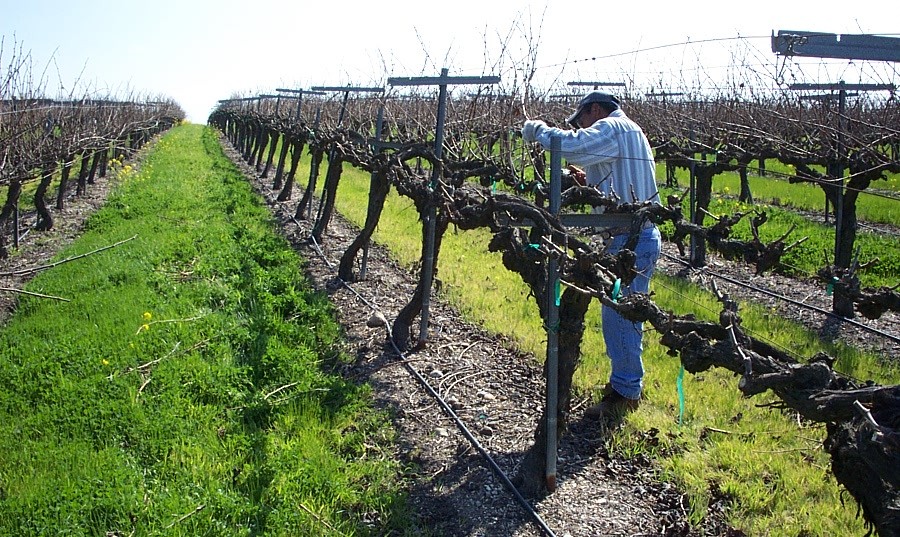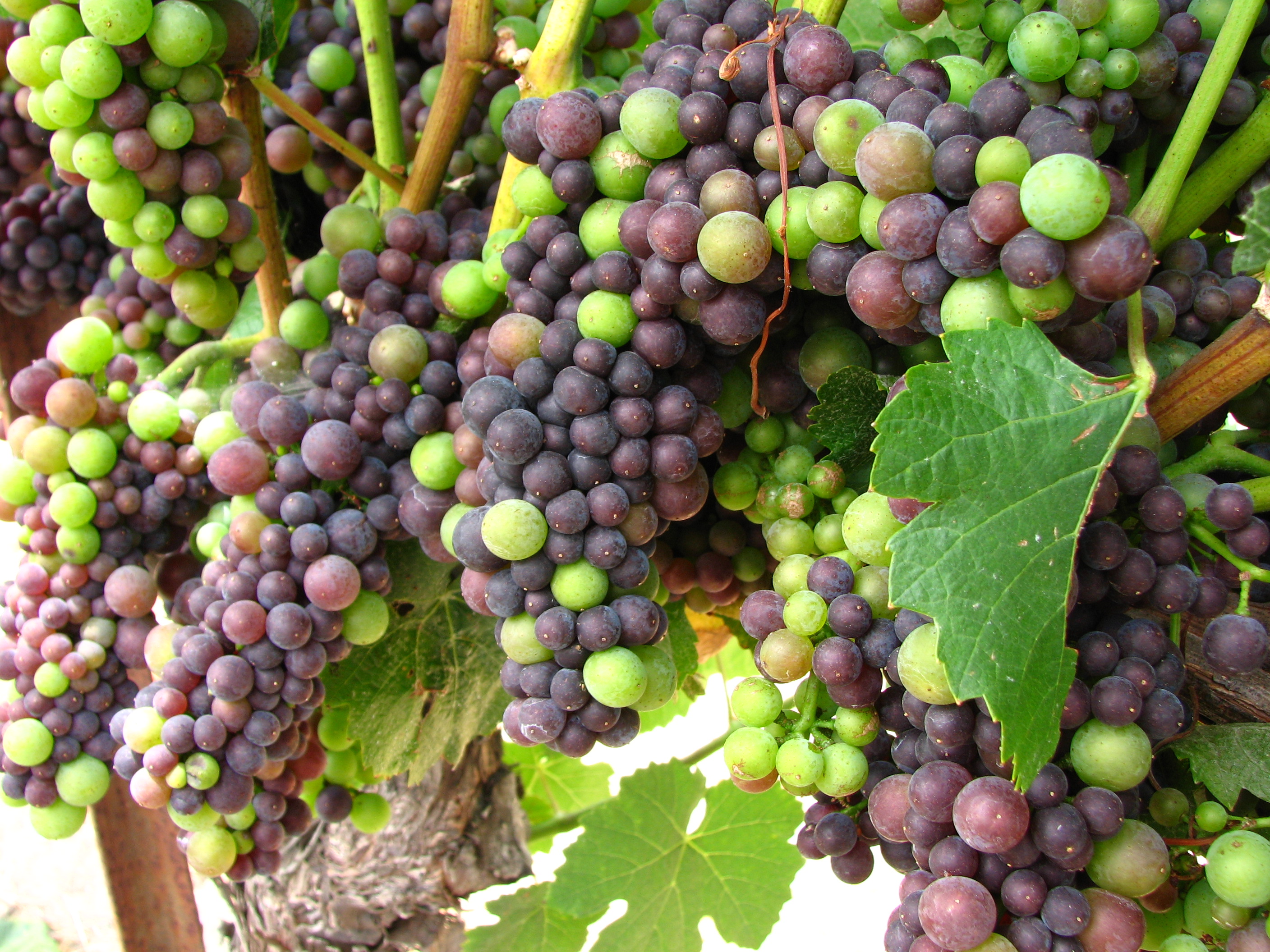Seasonal Practices
Here are some of Pacific Coast Farming's Seasonal Practices
Winter
Pruning: Here in the Edna Valley, vineyard practices are all a matter of correct timing. With our mild coastal climate, this area lacks the accumulation of chilling hours.  For example, our hilltop Pinot Noir receives less chilling hours, which requires us to delay pruning in order to increase fruit set. Later ripening varietals, such as Syrah and Grenache will be pruned earlier to achieve an earlier harvest date. In order to achieve the desired production level in each block, it is critical that we leave the correct amount of buds per vine to meet those specific crop levels. All of the pruned wood is then placed on the middle of the vineyard rows. These "prunings" are then shredded and incorporated into the soils ecosystem, adding both organic matter and supplemental potassium.
For example, our hilltop Pinot Noir receives less chilling hours, which requires us to delay pruning in order to increase fruit set. Later ripening varietals, such as Syrah and Grenache will be pruned earlier to achieve an earlier harvest date. In order to achieve the desired production level in each block, it is critical that we leave the correct amount of buds per vine to meet those specific crop levels. All of the pruned wood is then placed on the middle of the vineyard rows. These "prunings" are then shredded and incorporated into the soils ecosystem, adding both organic matter and supplemental potassium.
Spring
Shoot Positioning: Shoot positioning is the removal of young shoots that may "over-crowd" the crown area of the vine or the removal of shoots that are "un-fruitful". By removing these shoots and leaving only the desired positions, we promote ideal fruiting levels and healthy vine balance.
Wire Moving: This consists of a series of two to three different passes in which the "lift wires" are moved into position to facilitate the rapidly growing vine shoots. With these efforts the shoots are then trained into a "vertical shoot position" or VSP, in order to achieve the maximum interception of sunlight.
Summer
Leafing: To achieve even fruit ripening the majority of our vineyard row orientations are north - south. The removal of leaves in and around the fruiting zone takes place during the critical weeks of summer, right after fruit set and when temperatures are mild. Leaves are removed on the morning sun side of the canopy, as this area needs as much sunlight as possible to ripen the fruit in our cool climate.
Thinning and Green Drop: The thinning of clusters occurs in areas that are "over-cropped"  or too congested. This is done early in the development of the fruit in order to get light on the interior of the cluster and also prevent potential bunch rot diseases. "Green drop" occurs during veraison as the fruit turns color and the skins soften. This practice removes "green" fruit that has fallen behind in maturity and leaves only those clusters that are evenly ripened.
or too congested. This is done early in the development of the fruit in order to get light on the interior of the cluster and also prevent potential bunch rot diseases. "Green drop" occurs during veraison as the fruit turns color and the skins soften. This practice removes "green" fruit that has fallen behind in maturity and leaves only those clusters that are evenly ripened.
Fall
Harvest: After extensive phenolic testing and tasting of the fruit has determined that harvest should begin, the most critical time of the season ensues. Our vineyards are harvested by hand or machine during the early morning hours in order to deliver cool fruit to the various wineries for production.
Cover Crops: Once harvest is complete and our energy is restored, site specific cover crops are planted including bell beans and oats, merced rye grass, barley, triticale, and California native flower mix. These cover crops will help add organic matter, prevent erosion, increase beneficial insect habitat, and add nice aesthetics to the vineyards. In addition to the cover crops, compost and gypsum are spread where needed in order to help the infiltration of winter rains into the soil profile.
All Rights Reserved.





